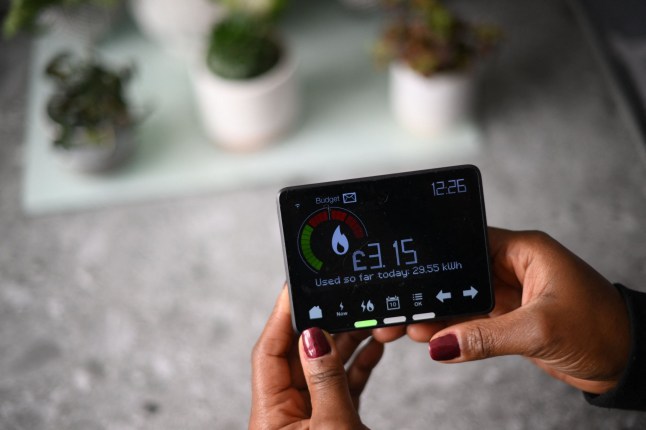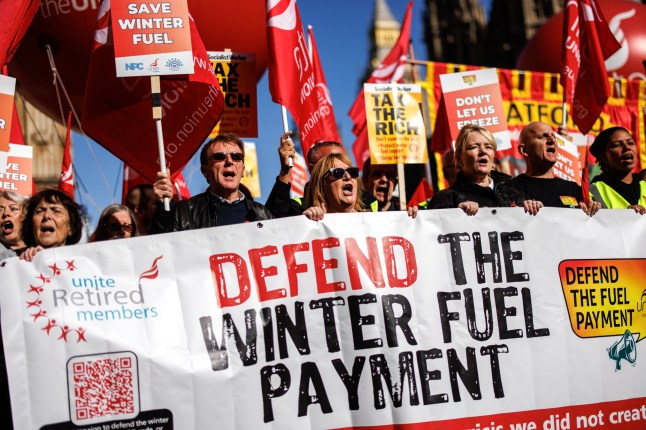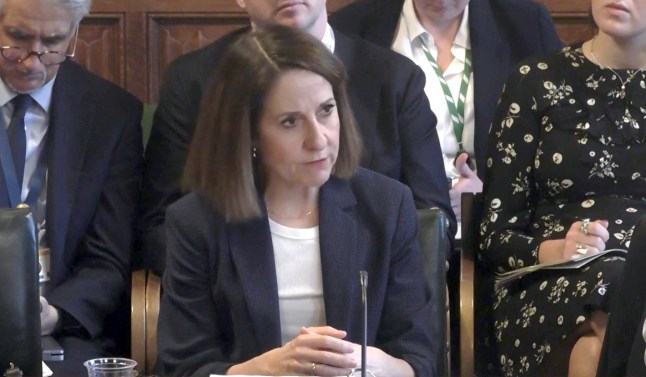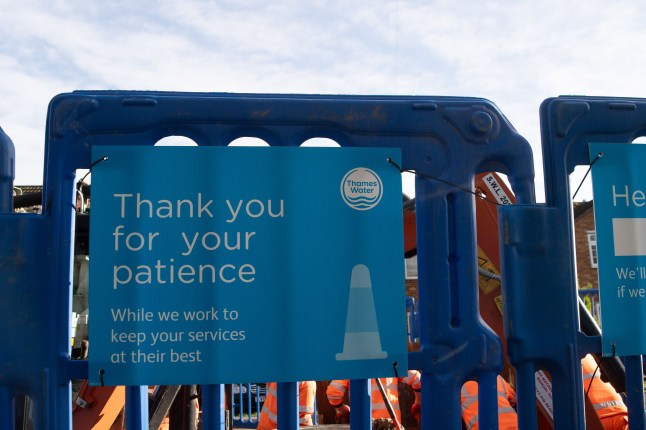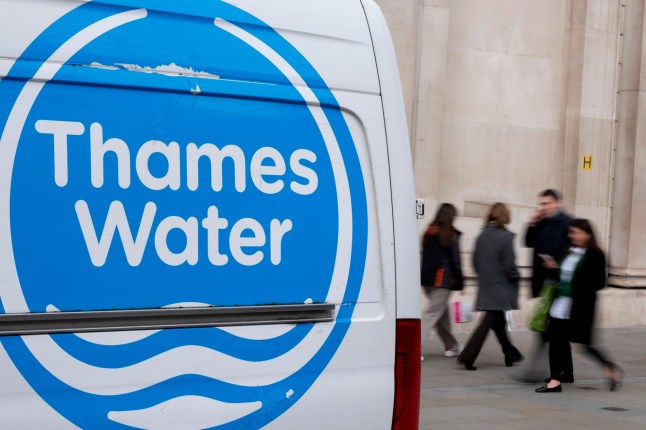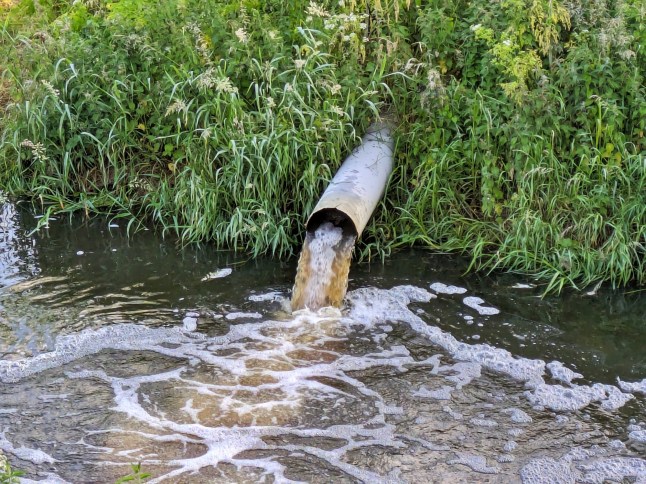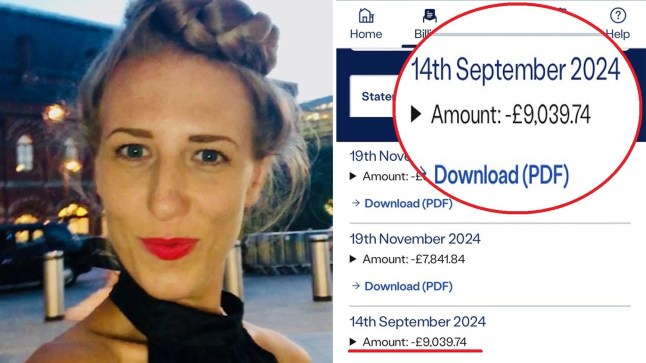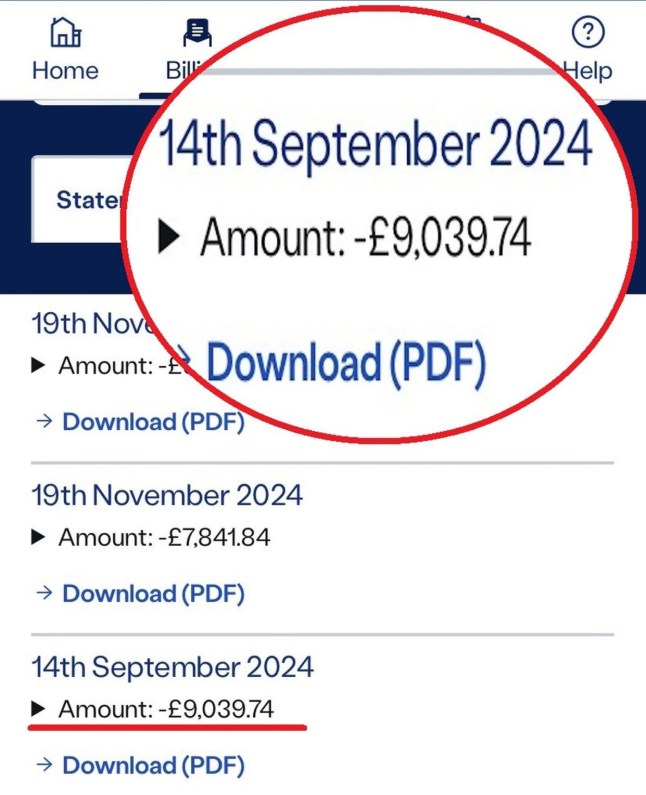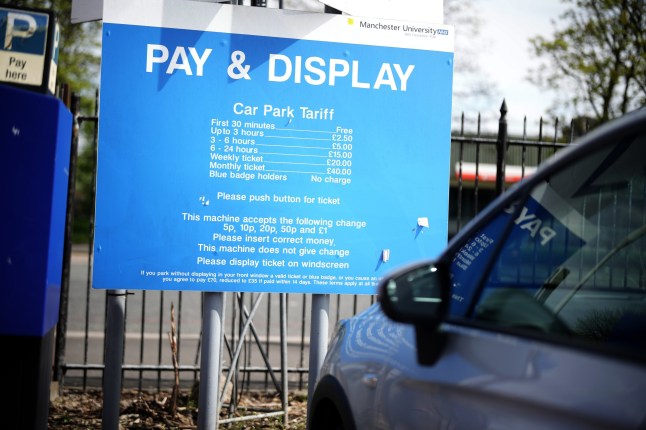
At least a quarter of NHS trusts in England have increased the cost of parking in the two years to March 2024.
The hikes were criticised by a patients’ charity who accused bosses of unfairly penalised people who are sick.
But health experts said hospitals are ‘under huge financial pressure’ and simply cannot afford to maintain car parks free of charge.
Some 37 trusts – 25% of the 147 in England – said they had raised the price of parking at some point between April 2022 and March 2024.
While 122 of the 147 trusts responded to the FoI request, 25 did not, meaning the actual number who upped their charges may be higher.
There were 65 trusts – 44% of the 147 in England – who said there had been no increases during the two-year period.
Saffron Cordery, interim chief executive of NHS Providers, said: ‘NHS trusts – most of whom are under huge financial pressure – just couldn’t afford to maintain car parks without charging people to use them.
‘The last thing trusts want to do is have to divert money away from patient services.
‘City centre and urban hospital car parks where spaces are in great demand are a particular challenge.’
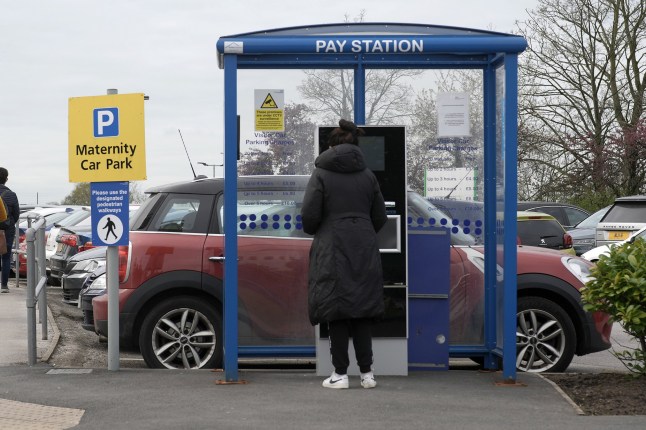
However, Rachel Power, chief executive of the Patients Association, a charity supporting the interests of all patients and their families, claims charges ‘unfairly penalise’ unwell people.
‘With car parking charges increasing again this year at many NHS hospital sites, patients and their families are facing an even greater financial strain,’ she said.
‘The ongoing cost-of-living crisis is already pushing many households to the brink, and these charges unfairly penalise people simply for being unwell and needing access to essential healthcare.’
Here’s a list of the NHStrusts where the charges have increased, according to data compiled from Freedom of Information requests.
– Ashford and St Peter’s Hospitals NHS Foundation Trust
Charges were increased from February 1, 2023. Up to 20 minutes remained free, while stays of up to two hours, two to three hours, three to four hours and four to five hours all increased by 50p to £4.50, £5.50, £6.50 and £7.50 respectively. Stays of five to six hours and the weekly rate remained the same. Charges for stays of more than six hours increased by £1 to £10.
– Barking, Havering and Redbridge University Hospitals NHS Trust
Charges were increased from February 1, 2023. Up to 20 minutes remained free, with charges for up to two hours, two to three hours, three to four hours and four to five hours increasing by 50p to £4.50, £5.50, £6.50 and £7.50 respectively. The day rate of more than six hours increased by £1 to £10. Tariffs for five to six hours remained the same (£8), as did the weekly rate (£25).
– Barts Health NHS Trust
Tariffs were increased for patients and visitors during the period at Newham Hospital only. Up to one hour was a new charge at £2. Up to three hours increased by 70p to £3.70, while up to six hours increased by £1 to £7. Charges for an eight-hour stay and up to 24 hours remained the same at £8 and £16.50 respectively.
– Blackpool Teaching Hospitals NHS Foundation Trust
The trust increased prices on July 1, 2023. Stays of two hours, two to three hours and three to six hours all increased by 20p to £2.70, £3.20 and £4.20 respectively. Six to 24 hours increased by 30p to £6.30.
– East Suffolk and North Essex NHS Foundation Trust
The trust increased primary care tariffs and charges at Ipswich Hospital in August 2022, followed by Colchester Hospital in January 2023. Up to 30 minutes at both hospitals remained free, although charges for one, two and four hours increased by 20p, 30p and 50p respectively to £2.20, £3.30 and £4.50.
There was a £5.50 charge introduced for five hours and a £10 charge for 24 hours. The price of an eight-hour stay increased to £6.50 from £5.
However, a five-day pass was cheaper at £12, down from £15, while a seven-day pass was £4 cheaper at £14. In primary care, one hour was free, with two hours costing 30p more at £3.30. A stay of four hours increased by 50p to £4.50, eight hours was £1.50 dearer at £6.50 and 24 hours was £2 dearer at £12. A five-day pass was £1 dearer at £16, although the price of a seven-day pass remained the same at £18.
– East Sussex Healthcare NHS Trust
Tariffs were increased from January 2024:
Up to one hour – Up by 20p to £2
One to two hours – Up by 20p to £3.60
Two to three hours – Up by 25p to £5.20
Three to four hours – Up by 35p to £7
Four to five hours – Up by 40p to £8.50
Five to six hours – Up by £1 to £10.20
Six to 12 hours – Up by £1.10 to £11.80
Twelve to 24 hours – Up by 85p to £18.30
– Frimley Health NHS Foundation Trust
In 2022/23, the trust increased charges for up to two hours from £3.30 to £3.50. In 2023/24, the tariff for up to two hours increased to £3.80, while three to four hours went up from £5.50 to £6 and a four to five-hour stay increased from £6.50 to £7.
– Great Western Hospitals NHS Foundation Trust
Up to 20 minutes remained free, with the charge for up to one hour increased from £1.10 to £1.50 in 2023/24. Elsewhere:
One to two hours – up by 80p to £3
Two to three hours – up by £1.20 to £4.50
Three to four hours – up by £1.60 to £6
Four to five hours – up £2 to £7.50
Five to six hours – up £2.20 to £10
After 6pm, charges for up to two hours increased by 40p to £1.50, while more than two hours is £1 dearer at £3.
– Hampshire Hospitals NHS Foundation Trust
There was a change in durations and charges from December 1, 2022. Up to 30 minutes remained free, while tariffs for up to one hour increased by 20p to £2. The trust stopped charging on the half hour, instead charging on the hour. For example, there was no longer a £2.80 charge for one hour 30 minutes. The tariff changed to one to two hours at a cost of £3. Elsewhere, the £10 eight-to-24-hour stay changed to 12 to 24 hours at a cost of £16.
– Lancashire Teaching Hospitals NHS Foundation Trust
The trust increased its prices for visitors by 3.9%, which it said was in line with inflation.
– Leeds Teaching Hospitals NHS Trust
The trust increased the price of staff permits as well as tariffs for visitors.
The price of a standard £30 staff permit, for example, went up by 2.3% to £32.24. Hourly charges were also increased across its sites, including Leeds General Infirmary and St James’s University Hospital.
– London North West University Healthcare NHS Trust
Hourly tariffs were increased by a total of 2.6%, while concessions, including weekly passes, went up by 1.0%. There was no increase to charges for patients having chemotherapy.
– Maidstone and Tunbridge Wells NHS Trust
Prices were increased from 2023. Up to 30 minutes remained free, with a charge of £2.50 introduced for 30 minutes to one hour. Elsewhere, stays of two to four hours, four to six hours and six to eight hours previously cost £4, £6 and £8 respectively, but charges for stays of two to three hours (£4), three to four hours (£5), four to five hours (£6), five to six hours (£7) and six to seven hours (£8) were introduced.
The trust previously charged £10 for stays of eight to 10 hours. Now, a stay of seven to 10 hours costs £10, while 10 to 16 hours is £12 and 16 to 24 hours is £15.
– Manchester University NHS Foundation Trust
The trust said it aligned its car parking tariffs for patients and visitors across all its hospital sites following the reinstatement of parking charges post-Covid.
– Medway NHS Foundation Trust
The trust increased charges for stays of up to two hours, two to three hours, three to four hours and four to five hours by 20p, 30p, 40p and 50p respectively to £2.20, £3.30, £4.40 and £5.50. Stays of between five and 24 hours remained the same at £10.
– Mid Cheshire Hospitals NHS Foundation Trust
Charges did not increase for patients during the period. However, the trust did change its staff charging structure, meaning some worker tariffs increased and others were reduced. Band seven staff and above were charged more for permits.
– Milton Keynes University Hospital NHS Foundation Trust
According to its disclosure log, the trust increased tariffs. The charge for 15 minutes to one hour went up by 10p to £2.80, a three-hour stay increased by 20p to £3.70, up to six hours went up by 20p to £5, up to eight hours increased by 20p to £5.50, while up to 24 hours increased by 40p to £11. A weekly ticket is now £21, up from £20, and a lost ticket costs £11, up from £10.60.
– North Tees and Hartlepool NHS Foundation Trust
The trust increased the tariff at its long-stay car park at the University Hospital of North Tees from December 1, 2023. The rate had previously been £2 per 14 hours and was increased to £2.50 per 14 hours. All other parking rates remained unchanged from 2022/23 to 2023/24.
– North West Anglia NHS Foundation Trust
Tariffs increased by 20p per hourly session at Hinchingbrooke Hospital and Peterborough City Hospital, but charges were not increased at Stamford and Rutland Hospital.
– Northern Lincolnshire and Goole NHS Foundation Trust
The trust increased tariffs for staff and patients during the period. For the public, up to one hour went from £2.40 to £2.70, one to two hours increased from £3.90 to £4.40, two to four hours went up from £4.40 to £5 and more than four hours increased from £4.90 to £5.50.
Off-site barrier charges for staff increased from £8.50 to £9.60, while off-site non-barrier charges increased from £9.45 to £10.60. The charge for on-site barrier car parks went up from £25.50 to £28.40.
– Oxford University Hospitals NHS Foundation Trust
The trust increased tariffs for patients and visitors at John Radcliffe Hospital, Nuffield Orthopaedic Centre and Churchill Hospital on August 1, 2023. Up to 30 minutes remained free, although 30 minutes to one hour increased from £1.40 to £2.20. A one to two-hour stay was 10p cheaper at £2.70, as well as a two to three-hour stay which went from £4.20 to £3.70. Three to four hours increased from £5.60 to £6.20 and the cost for more than four hours went up by £1 to £8. Stays between 8pm and 8am were previously free but now cost £2.
– Royal Berkshire NHS Foundation Trust
According to the trust, staff are charged 1.25% when they park on site. It added that a 10% increase in 2023 ‘was based on the fact that the patient tariff had not been increased for four years’ and therefore ‘10% was a fair increase based on inflation’.
– Royal Free London NHS Foundation Trust
The trust increased the costs of its staff permits and parking charges for visitors. A multi-site pass and a pass for the Royal Free Hospital increased from £94.28 to £99.84 per month for full-time staff from April 1, 2023. Part-time staff are charged £49.82, up from £47.14. Tariffs for off-peak and weekend parking also increased slightly.
The staff permit tariff at Barnet and Chase Farm hospitals is charged based on a percentage of salary. These percentages increased from 0.84% to 0.89% for full-time staff and 0.42% to 0.45% for part-time staff at both sites. For patients, hourly charges were increased across all three hospitals from December 1, 2023.
– Royal Surrey NHS Foundation Trust
One hour £3.70 increased to £3.90
Two hours £4.70 increased to £4.90
Three hours £5.30 increased to £5.60
Four hours £5.80 increased to £6.10
Six hours £6.80 increased to £7.10
Twenty-four hours £9.80 increased to £10.30
– Sandwell and West Birmingham Hospitals NHS Trust
Charges were increased by 4%.
– Surrey and Sussex Healthcare NHS Trust
Tariffs for patients and visitors increased on January 15, 2024. Stays of up to two hours, two to three hours, three to six hours and six to 10 hours all increased by 50p each to £5, £6, £7, and £8 respectively. Stays of between 10 and 24 hours increased from £6 to £13.
For staff, charges were reintroduced on June 1, 2023 and are banded by annual salary. Those earning £23,000 or below pay 50p a day, while those on between £23,500 and £47,600 pay £1.25 a day. Workers on the highest salaries of £48,000 or above pay £1.80 a day.
– The Newcastle upon Tyne Hospitals NHS Foundation Trust
Tariffs were increased in October 2022. Up to 30 minutes is free, up from 15 minutes, although charges for up to one hour increased from £1.20 to £2. One to two hours increased from £2.40 to £4, two to three hours increased from £3.60 to £6 and three to four hours increased from £4.80 to £8.
A standard tariff for four to five hours is £12, up from £6, but will cost patients £8. A standard charge is £18 for five to 24 hours, but is £8 for patients. Previously, the standard charge for five to six hours and six to 24 hours was £7.20.
– The Royal Wolverhampton NHS Trust
Stays of less than 15 minutes remained free but there was a 20p increase for stays of up to one hour, one to two hours, two to three hours and four to five hours.
– Torbay and South Devon NHS Foundation Trust
The trust changed its prices for patients and visitors from November 2023.
Up to 30 minutes – previously 20 minutes – was now free, with up to one hour costing £1.50. The price for two hours increased from £2.50 to £2.70, three hours was now £3.90, up from £3.50, and four hours cost £4.80, up from £4.50. The price for stays of five hours and six hours remained the same. The charge for between seven and 24 hours was £15, with the £10.50 tariff for eight hours no longer available.
– University Hospital Southampton NHS Trust
The trust upped charges for its short and long-stay car parks from September 2023. At the short stay, up to one hour increased by 20p, stays of up to two and three hours increased by 40p to £4.90 and £5.90 respectively, while up to four hours increased by 50p to £7. Stays of up to five hours increased from £7.50 to £8.10, and six hours went from £8.50 to £9.20. Stays of between six and 12 hours increased by £1 to £14 and between 12 and 24 hours is now £17.30, up from £16.
At the long-stay sites, there was no change to the charge for seven days. Stays of 14 days increased from £38.50 to £41.60 and 30 days was now £59.40, up from £55.
– University Hospitals Bristol and Weston NHS Foundation Trust
Up to 40 minutes was free, while up to two hours cost £3.50. The trust previously charged £1.80 for up to one hour and £3.40 for one to two hours.
A two to four hour stay was now £6, up 20p, while four to six hours increased by 20p to £7.30. A six to eight-hour stay remained the same at £12 while eight to 24 hours went up by £1 to £16.
– University Hospitals Coventry and Warwickshire NHS Trust
Tariffs were increased at University Hospital in Coventry and Hospital of St Cross in Rugby. At University Hospital up to 10 minutes remained free. Up to one hour increased by 40p to £3.60, two hours went from £4.40 to £5, three hours increased by 70p to £5.70 and four hours went up by 80p to £6.80. Stays of five hours increased by £1.10 to £8.90, up to six hours is £11, up from £9.70 and a 24-hour stay increased from £11 to £12.50.
At Hospital of St Cross, up to 30 minutes remained free. Up to three hours increased by 30p to £2.30, while up to five hours increased from £4.80 to £5.50. The tariff for up to 24 hours was now £9.70, up from £8.50.
– University Hospitals Dorset NHS Foundation Trust
The price of a two-hour stay increased by 40p, while stays of three, four and six hours increased by 30p, 40p and 20p respectively. There was no change to prices for a 24-hour stay, although overnight – between 6pm and 7am – increased by £1.
– Walsall Healthcare NHS Trust
In 2023/34, the trust increased parking for up to one hour to £3.30 from £3.
One to two hours increased from £4 to £4.30, two to three hours increased from £4.50 to £4.80, three to four hours increased from £5 to £5.80, and four to five hours increased from £5.50 to £5.80. There was no change to charges for 5-6 hours, 6-7 hours, 7-8 hours, 8-9 hours, 9-10 hours, 10-11 hours, 11-12 hours, 12-24 hours, or a weekly pass.
– Worcestershire Acute Hospitals NHS Trust
One hour – up by 30p to £3.30
Two hours – up by 40p to £4.40
Three hours – up by 50p to £5.50
Four hours – up by 60p to £6.60
Five hours – up by 65p to £7.15
Six hours – up by 75p to £8.25
Eight hours – up by 85p to £9.35
Twenty-four hours – up by 90p to £9.90
– Wrightington, Wigan and Leigh NHS Foundation Trust
Charges increased at the Royal Albert Edward Infirmary, Leigh Infirmary and the Freckleton Street multi-storey in November 2022. Drop-offs and up to 30 minutes remained free, stays of up to two hours increased by 30p to £3.30, two to four hours and four to 24 hours increased by 50p to £5.50 and £7 respectively.
Charges at Wrightington Hospital and the Thomas Linacre Centre also increased in November 2022. Drop offs at up to 30 minutes remained free, while stays of up to one hour and one to two hours increased by 30p each to £2 and £3. Two to four hours and four to 24 hours increased by 50p each to £5.50 and £7.
– York and Scarborough Teaching Hospitals NHS Foundation Trust
The trust said charges were brought in line with nearby council car parks at its York, Scarborough and Bridlington sites as part of the installation of automatic number plate registrations in April 2023.
In York, up to one hour increased by 30p to £2.50, with a 60p increase for two hours (£5), a £1.10 increase for three hours (£7.50) and a 20p increase for four hours to £9. All-day passes increased by 10p to £10.
In Scarborough, one hour increased by 25p to £1.45, two hours increased by 40p to £2.90, three hours went from £3.50 to £4.35 and four hours increased from £4.50 to £5.80. An all-day pass increased by £1.20 to £7.20.
In Bridlington, stays of up to an hour were 20p cheaper at £1. Stays of two, three and four hours remained the same and an all-day pass was made 60p cheaper at £5.40.
Get in touch with our news team by emailing us at webnews@metro.co.uk.
For more stories like this, check our news page.
